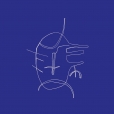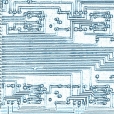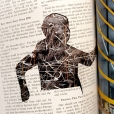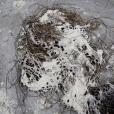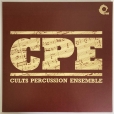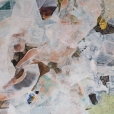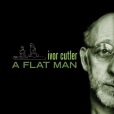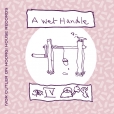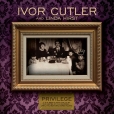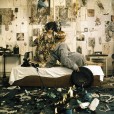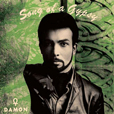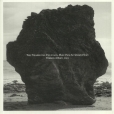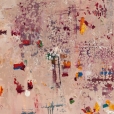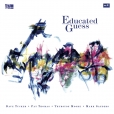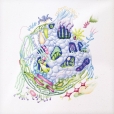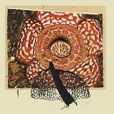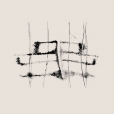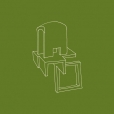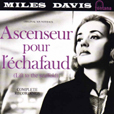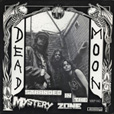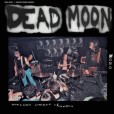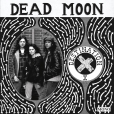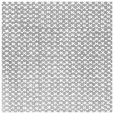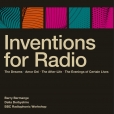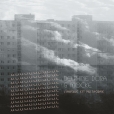Your basket is empty

Snoopy is hard to follow up. The same brilliant musicality is lavished on Orange — a combination of unmistakably original, skittering drum programming, startlingly fresh instrumental interjections, creepily invocatory voices, and dubwise treatments — giddily imbued with the dark arts of ritual and seance. But Orange is more gripping, focussed and urgent, more intense and ambitious. Next level.
Its first quarter presents a trio of forays in suspense.
Bassline squares up like an epic psych-funk grinder, with a moody guitar line traversed by ticking drum patterns and faint electric crackle. In no time the guitar is staggering and stammering under the duress of echo and distortion, and over-run with percussive electronics and the first of the voices massing in the music’s head. The mood has quickly become more trepidatious. We’re deeper underground; it’s gloomier, wetter.
Shred propulsively ratchets up the tension and menace. Glazily tentative xylophone is played against slashing, nervy cello. The voices are more strangulated and sick now. Flutes and chimes evoke the same kind of beautiful, contaminated efflorescence which is pictured on the LP’s front cover.
Voice Of The Spider makes easier progress across this cavernous, shadowy, dripping terrain, with funky pads and Nasty, eighties, No Wave electric bass; woozy chimes, non-plussed keys, singing-in-tongues.
Pink Mist marks an arrival, or unbottling, with annunciatory church-organ and choral voices from the off, and a newly relaxed, head-nodding kosmische rhythm.
Mandarin is a short, beat-less and voice-free interlude for piano and bass. It’s reflective and nostalgic, ambivalent and inconclusive, with a lovely snatch of melody. A bridge half-way.
Would You Like A Vampire is a triumphant, mesmerizing go at New Folk, with strummed acoustic guitar, descant song, and jazzily restless drum programming (including a tasty bass-bin trembler). Amazingly, Conrad Standish is joined at the mic by none other than Bridget St John. Together they sing ‘Earth is Paradise’ so repeatedly and tremulously — and the song is cut off so abruptly at the end — it seems as if the verb is teetering on the past tense, and hymn fading into valediction and catastrophe.
In the same line of thought, Storm Rips Banana Tree begins idyllically enough, with a CS-&-Kreme-style raga… before something like an immense, obliterative drill starts up. Harpsichord and organ — by James Rushford — and flutes, and clapping, distant chanting and insectile percussion steadily leaven the dread, till finally all that is left is lapping water.
It’s an epic, deeply immersive, compelling, thought-provoking, twenty-minute finale… the coup de grâce.
Dreamy percussion exotica by a group of fourteen-year-old students (ten girls, including Evelyn Glennie, and one boy) in Aberdeen, 1978.
Jarvis Cocker’s thrilled to bits — ‘Here, at last, is the the soundtrack to maybe THE underground film of all time in all its crazy daisy glory’. A mental cut & paste of Czech orchestras, folk, jazz and experimental sounds.
Intensely sought-after, highly-considered, late-60s psych rock — homespun, funky, introspective — privately pressed in the dark, hazy twilight of flower power. Plus D’s back pages, expertly restored.
‘In another life David Edren aka DSR Lines is surely a visionary biologist or chemist. In this new sound adventure, he stages anatomical and cellular symphonies, invisible biochemical processes, painting the micro-dimensional flows of the body, or imaginary geographies of hidden micro-bodies. His signature organic-electronic sound is enriched here with the influences of non-European music, especially Chinese and Japanese music (stick and chimes percussion). The mood is intimate and twilit, poised between exotic ambience and cinematic gesture: a miniaturist description of liquid currents, labyrinthine veins, weaving streams, molecules and particles in multi-orbital dances, muscular chords, drowning bubbles, light waves; all within a confident compositional overview that is unique and fascinating.’
‘Experimental jazz, chanson, bluesy folk and various strains of outsider music permeate a rich layering of music boxes, walkie-talkies and plastic straws, plucked charrango and banjo, kazoos, flutes and snake-charming ocarina, accordion and melodica, found percussion and traditional tuned drums. The moods switch from child-like and epiphanic (Tarzan en Tasmanie, Madrigal for Lola) to babbling (Pocarina), mysterious and dark (Septième Ciel, Rugit Le Coeur) to tender and simple (Rainbow de Nuit, Chevalier Gambette); from murky, suspenseful melancholy (Levy Attend, Eno Ennio) to pensive psychedelia (Un Cercueil à Deux Places). A world of echoes. A tale of tales. You’ll be whistling and humming along on first listen.’
Says Mississippi — ‘Some call them the thinking man’s AC/DC & some call them the working man’s Roky Erickson but really there is nothing that compares to Dead Moon. D.I.Y on every imaginable level, brilliant song writing, perfect elemental stripped down playing, honest & intense vocals. It’s all here.’
Old records of solo dulcimer, fairground mechanical pianos and music boxes, re-rendered via a slowed-down, pitch-modified turntable, with tape delay, EQ-fiddling and distortion.
Strange, atmospheric, poignant, folky dokey. Well worth checking.
Wow!
‘The BBC’s Third Programme aired four radio broadcasts between January 1964 and September 1965, collectively known as Inventions for Radio. Conceived by playwright Barry Bermange they consisted of the voices of the general public answering questions on four themes, one for each programme: dreams, the existence of God, life after death, and ageing. The Dreams, Amor Dei, The After-Life, The Evenings of Certain Lives. Delia Derbyshire was assigned by the Radiophonic Workshop to edit and add electronic music/ effects. The collaborative result is dreamlike and mesmerizing.’
Including one LP for each broadcast, and two further LPs of additional material, together with a twenty-page booklet, housed in a lidded box.
‘Recorded in an old church in the village of Mauzun in the Puy-de-Dôme, L’invisible est multiforme is an invitation to let these abstract songs erase our obsessive thoughts of the day, to open ourselves to the vibrant poetry of the air and the evening, to finally forget ourselves. Each note played by these four intertwined hands is like a slight break in the fabric of time, sliding one over the other, reminding us of mortality and its beauty. Ritornellas flow out of mechanical clocks, fragile, taking care not to hurt the silence. Both seek to dig and open up new paths to enrich their duet, to open up imaginary landscapes. Sometimes the guitar cuts. through the fabric of an organ, fractures the song, just as the rain erases a landscape, redrawing it. But very quickly, both of them continue to follow this new path, improvising what will serve as a framework, a perspective, a language. There is a kind of praise for slowness in this ‘invisible’, a desire to hold back the song, not to let it slip away, to let the listener’s ear enter its course, to share the last note, its illumination. Each of these thirteen short sound pieces merge into a common colour, a vibration close to the different tonalities, which inter-penetrate, like a cubist painting. Words cannot take away the mystery of this record, words can only fail to describe the music, you must hear it’ (Michel Henritzi).
Beautifully presented, with numerous photographic inserts.
